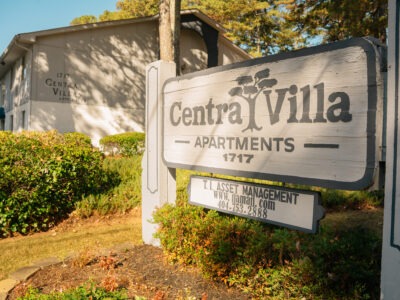Social impact investors have a role to play in increasing access to affordable housing for those experiencing homelessness.
Together, housing, systems, and a community can solve homelessness. Communities in Built for Zero have proven the power of setting a shared aim, knowing those experiencing homelessness by name, and working as a single team to make homelessness rare and brief for a population.
In some cases, these changes have propelled communities all the way to functional zero homelessness for one or more populations. But in many places, a lack of access to affordable housing is a barrier for achieving or sustaining functional zero. Social impact investors can help remove those barriers, particularly in markets with rapidly growing rents and a limited availability of affordable units.
Traditional methods of creating affordable housing are often too slow and rigid to adapt to the dynamically changing housing needs of a community. Social impact investors are working to deploy their resources and partnership to help communities unlock a more flexible and faster pathway for creating affordable housing units. These approaches are centered around a community’s aim of measurably reducing and ending homelessness and work to connect housing systems to create permanently affordable residences.
Questions to ask
● How can I support the aim of reducing homelessness in my community?
● How can I partner with nonprofits to deploy an ownership model that preserves affordability over the long term?
● How can I ensure that properties are connected to the housing system for individuals experiencing homelessness?
● How can we ensure that properties are able to connect tenants with services that support long-term housing stability?
● How can we ensure that properties are able to connect tenants with services that support long-term housing stability?
● Is the community I’m hoping to invest in participating in Built for Zero?
Actions to take
1. Connect your efforts to support the aims of the local homeless response system.
The homeless response system refers to a constellation of organizations, agencies, and actors in a community that are dedicated to reducing and ending homelessness. As part of this work, many communities are working to ensure they have a real-time understanding of who is experiencing homelessness and what support each individual needs to exit it. In Built for Zero communities, this is referred to as quality, by-name data.
Explore whether your community has a measurable aim for reducing homelessness and a real-time understanding of where housing supply gaps stand in the way. Find ways to support those aims of driving reductions in homelessness Try to invest with community partners that have an understanding of existing housing supply and are positioned to connect that supply with unhoused individuals.
THE IMPORTANCE OF DATA
With accurate data, no one experiencing homelessness is overlooked for help, and communities can see if they’re making real progress — as a growing number of communities have proved. Accurate data is also key to identifying and correcting racial disparities in your community’s response to homelessness.
2. Preserve long-term affordability by considering nonprofit ownership.
As a social impact investor, consider shifting toward long-term, sustainable engagement in your investment approach, as opposed to time-limited returns. From Denver to Santa Fe, developers are pioneering creative ways to ensure that buildings remain affordable and continue to be an asset for the community indefinitely after the investment hold period ends. Under the management of nonprofit partners, units are not incentivized by profit, but focus rather on people first.
3. Support property management plus.
Learn more about an enhanced form of property management where residents are connected to social services. Tenants should never live in fear of being evicted if a payment is late or they are experiencing instability. Property managers are at the property daily, so they are often best able to notice and address an issue early on. Simply creating affordable units alone is not enough, some tenants need access to supportive wrap around services to maintain housing stability.
4. Work with local officials and business leaders to create conditions that help reduce and end homelessness.
Support reducing homelessness by harnessing your relationships and resources to shape policies, practices, and investment decisions in your community. Connect with local officials to navigate zoning and development laws, which may allow you to create projects that would otherwise have policy roadblocks. Speak with mayors, city councils, city planning and housing officials in the community to learn about social impact property investment opportunities.
KEY RESOURCES
Homelessness is solvable.
Communities in the Built for Zero movement are proving it.





